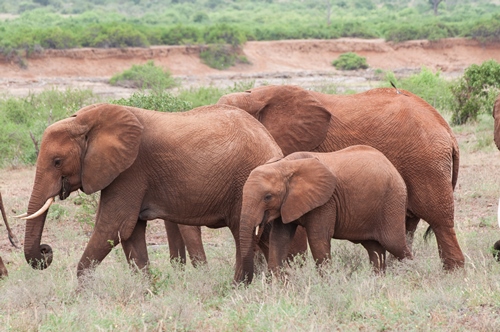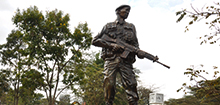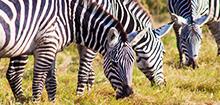
Date Published:
Kenya joins the rest of the world in celebrating this year’s World Elephant Day whose theme is “Bringing the World Together to Help Elephants” at Rumuruti in Laikipia County. Inaugurated in August 2012, this annual event is meant to bring world attention to the urgent plight of elephants.
Kenya Wildlife Service (KWS), the country’s lead wildlife conservation agency, will spearhead the celebrations attended by other conservation agencies, county and national government officials, and Kenyans in general.
Kenya’s wildlife and associated habitats are facing increasing threats from a burgeoning human population growth, the clearance of natural habitats for the establishment of settlements and the construction of infrastructure and industrial installations.
Due to their charisma and ability to modify natural habitats, monitoring elephants for the provision of accurate and timely information on their population status is paramount. The Government of Kenya through KWS is obliged to carry out this function, in collaboration with relevant conservation partners.
Poaching of elephants has been dynamic over the years dealing a big blow to the elephant population from about 170,000 in early 1970’s. More recently, elephant poaching has seen spatial shifts from the Samburu-Laikipia and Tsavo ecosystems over the period 2010-2015 to the areas of Amboseli, Shimba Hills, Meru and Mara ecosystems, where minimal poaching incidents were reported in the year 2015.
Due to various conservation efforts, there has however been an increase in elephant numbers, with the 2015 population at 35,149 elephants representing a 2.29% annual increase since 1989. The population is spread in a range area of 139,344 km2, an increase from 107,113km2as at the end of 2007 as a result of expansion of the Tsavo, Samburu-Laikipia and Amboseli ecosystems’ counting blocks.
KWS in conjunction with relevant local and international agencies, has taken the following measures to protect and conserve the elephant:
- Enhanced inter-agency collaboration in intelligence information gathering and sharing among key government agencies, and the inclusion of elephant poaching and illegal ivory trade into the agenda of the National Security Agents
- Cross-border collaboration in information sharing and the deployment of wildlife security patrols,
- Enhanced capacity of law enforcement and wildlife protection agencies, which includes recruiting, training and modernization of patrol equipment.
- Global public awareness campaigns, especially in consumer countries against poaching and illegal trade in ivory,
- Improved engagement of communities living with elephants as active partners in elephant conservation through supporting community efforts to manage and benefit from wildlife
- Establishment of a DNA and forensic Laboratory that has helped identify origin of seized ivory, and isotopic analysis that provide admissible evidence in courts of lawImproved focus on species specific challenges through development and implementation of species action plans.
Elephants, like other wildlife, face a myriad of threats and risks, most of which are human-induced ranging from habitat loss and fragmentation; increased human pressure and sophisticated infrastructural developments; human elephant conflict; poaching; adverse impacts of climate change as well as low genetic diversity with potential for inbreeding.
Despite these challenges, Kenya with support from international partners is determined more than ever before to curb elephant poaching and illegal wildlife trade.
Elephant conservation efforts go beyond our national borders and include actions through international bodies such as the Convention on International Trade in Endangered Species of Wild Fauna and Flora (CITES), which regulates trade in wild species and their products.
Kenya remains committed to playing its rightful role in international efforts to secure the African elephant and is lobbying for a collective stand to ensure the long-term survival of elephants throughout Africa. It is critically important that CITES takes decisive action to ban international and domestic trade in ivory to save elephants from imminent extinction. It’s for this reason that Kenya and 28 other like-minded countries under the African Elephant Coalition (AEC) framework have submitted five complementary proposals designed to strengthen the protection of elephants in Africa and Asia for deliberation at the 17th Conference of the Parties to CITES (CoP17) will be held in Johannesburg, South Africa from September 24 to October 5.
The proposals seek the listing of all African elephants in CITES Appendix I, banning international trade in elephant ivory, closure of domestic markets for ivory, destruction of ivory stockpiles, ending the Decision-Making Mechanism for legalising trade in ivory and prohibiting the export of live African elephants.
AEC was established in 2008 in Bamako, Mali. It includes 29-member African countries united by a common goal: “a viable and healthy elephant population free of threats from international ivory trade.”
Of the 29 countries represented in the Coalition, 26 of them are African elephant range States. They make up the majority of the 37 countries in which African elephants occur in the wild.





